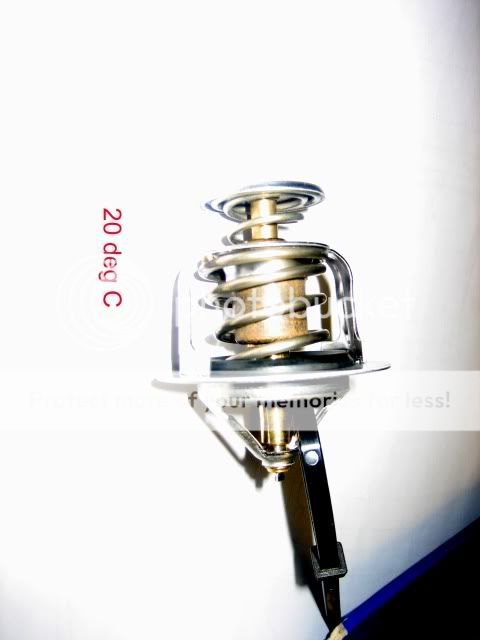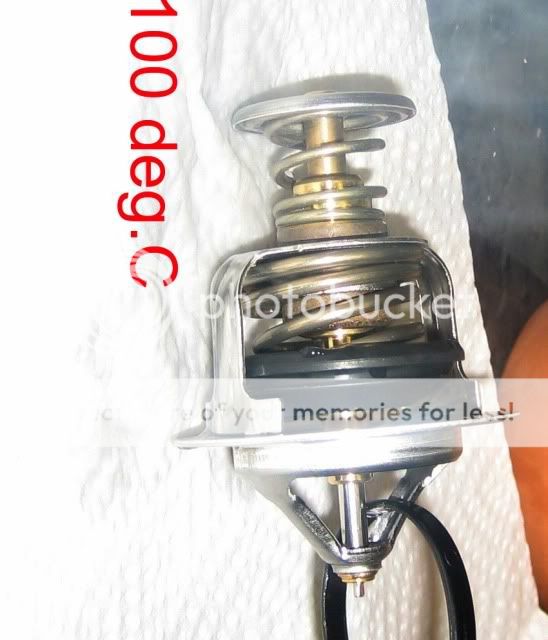As part of the cooling system fact sheet in production, I felt it necessary, for a better understanding of the system, to include an appendix with a detailed description of each component part, its function within the system, and how it works.waycar8 wrote:..........
..............the mazda one opened quicker than the blue print one slightly,
The wax in the stat is located in what can be described as a piston within a cylinder, the piston being the lower and FIXED to the pointed end of the cage.
The seal between piston and cylinder is in the pointed end of the stat and as such, is in the rad to stat pipe - ie the cooler side.
From trials, when the stat (Blueprint tested) experiences around 98 deg C, the piston/cylinder is at at the point of separation, ie stat failure. As the wax at this point is fluid, it can, (and I saw this in one extreme test I did) leak out between the piston/cylinder interface. The stat jammed in this position. However, when it cooled down a bit, and with a little persuation, the unit resumed its original shape.
Because wax has escaped, the remaining volume is smaller than the original. It is logical that this reduced volume will expand at a different rate to the full volume. ie slower to respond.
Is this the cause of a 'lazy stat', that folk keep mentioning? It certainly seems a viable explanation to me. Simple physics.
..............dirty ring on the center pin
and
..............bits of crap that circulating in the system and collecting in the edge,
Sounds logical
..............cone shaped pin and has a rubber seal type ring at the bottom,
and
..............mazda stat has the rubber ring around it to clean the pin as its opening and closing
Not sure. Very interesting bit this. Let you know my thoughts when I have dissected the Mazda stat
..............cone shaped pin stops the rubber going to far up the pin
Let you know my thoughts when I have dissected the Mazda stat. Taper in terface between 2 components? .......BUT......First thought was that it sounds like a perfect sealing arrangement to me.








